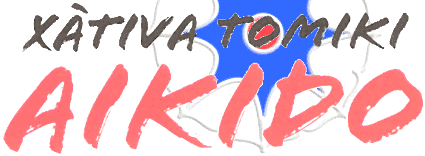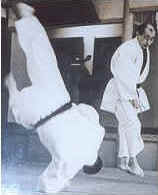Today
we had two sessions, in the morning we started with a vigorous warm up
and then we recapped the previous sessions.
Afterwards
we considered:
Tai
Sabaki
• What
is the best distance?
– Issoku
ittō-no-maai (Itto-ma): make sure they always have to take a step.
• How
do you stand?
– Right
Posture, Left Posture or Neutral Posture
• How
do you move?
– limiting
your opponents possibilities to focus
(a camera was used to illustrate this point)
– Keep
your focus forward.
– Watch
out, because F = F1 + F2 ...
– Switch
your weight: save 20 cm without moving your feet
• Where
do you look?
- Do
you look to the eyes, chest, shoulder, Tanto...?
– Peripheral
vision
– Foveal
vision provides both detail and colour, although for a very small, 2-4
degrees, area of the visual field. The Foveal pit in the retina at the
back of the eye uses about 50-60% of optic nerve fibres - hence the
detail...
– In
contrast, peripheral vision accounts for the rest of the visual field
with the remaining 40% of the optic nerve fibres -hence the lack of detail.
– The theory is that
peripheral
vision will detect motion quicker than Foveal vision -
hence it's use for toshu side
• Where
do you look after the tai sabaki?
• How
to use your arms?
– Redirecting
the force
– Hip
and arm twisting to generate more power to counteract the attack
– Where
do you touch?
– Wrist
(tekubi-waza)
– Elbow
(hiji-waza)
– Body
(atemi-waza)
• What
about posture?
– How
wide do you put your feet?
– Wider
= more stable, but less agility
– Standing
straight to be faster and stable (clean rotation around the axis)?
Waza
•
After kuzushi Tsukuri and Kake
•
What are the “ingredients” of your technique? Which principles do
you use?
–
Translational acceleration
–
Rotational acceleration
–
Levers
–
Gravity
–
Friction?
–
Impact pressure?
–
Attack the lightest part?
Uchi-komi!
·
Why Drill?
·
It reinforces the four
stages of learning
o
UNCONSCIOUS INCOMPETENCE
o
CONSCIOUS INCOMPETENCE
o
CONSCIOUS COMPETENCE
o
UNCONSCIOUS COMPETENCE
MORE
STUDY GROUP TOMIKI AIKIDO SESSIONS . . .
Sunday
|



